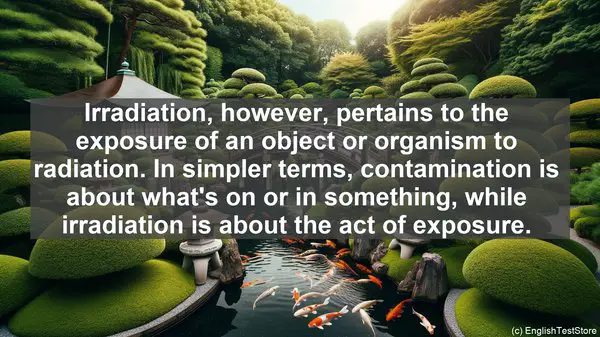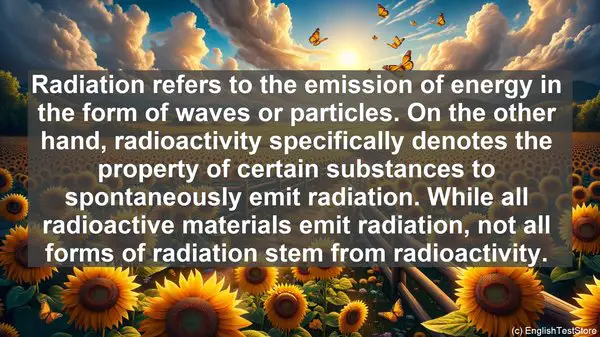Introduction
Today, we’re going to delve into the fascinating field of radiation ecology. But before we begin, it’s essential to clarify some commonly confused words that often crop up in this subject. By understanding the nuances between these terms, you’ll be better equipped to navigate the intricacies of radiation ecology.
1. Radiation vs. Radioactivity
Radiation refers to the emission of energy in the form of waves or particles. On the other hand, radioactivity specifically denotes the property of certain substances to spontaneously emit radiation. While all radioactive materials emit radiation, not all forms of radiation stem from radioactivity.
2. Contamination vs. Irradiation
Contamination refers to the presence of radioactive substances on surfaces or within objects. It can occur through direct contact or the deposition of radioactive particles. Irradiation, however, pertains to the exposure of an object or organism to radiation. In simpler terms, contamination is about what’s on or in something, while irradiation is about the act of exposure.

3. Alpha vs. Beta Particles
Alpha and beta particles are both types of radiation. Alpha particles consist of two protons and two neutrons, making them relatively large. In contrast, beta particles are high-energy electrons or positrons. While alpha particles are more massive and have a shorter range, beta particles are lighter and can travel further.

4. Half-life vs. Decay Rate
Half-life refers to the time it takes for half of a radioactive substance to decay. It’s a fixed property for each radioactive material. Decay rate, however, denotes the speed at which decay occurs. It can vary depending on factors like temperature and pressure. While half-life is constant, decay rate can change.
5. External vs. Internal Exposure
External exposure refers to the absorption of radiation from a source outside the body. For example, standing near a radioactive material. Internal exposure, on the other hand, involves the ingestion or inhalation of radioactive substances, leading to radiation exposure from within the body.
6. Acute vs. Chronic Exposure
Acute exposure refers to a high dose of radiation received over a short period. It often leads to immediate health effects. Chronic exposure, on the other hand, involves prolonged, lower-level radiation exposure. While the effects may not be immediately apparent, they can manifest over time.
7. Background Radiation vs. Man-made Radiation
Background radiation is the natural radiation present in the environment. It stems from sources like cosmic rays and radioactive elements in the Earth’s crust. Man-made radiation, as the name suggests, is radiation generated by human activities, such as nuclear power generation or medical procedures.
8. Biological Half-life vs. Physical Half-life
Biological half-life refers to the time it takes for the body to eliminate or reduce the concentration of a substance by half. It’s influenced by factors like metabolism and excretion. Physical half-life, on the other hand, is the time it takes for a radioactive substance to decay by half, irrespective of biological factors.
9. Roentgen vs. Sievert
Roentgen is a unit of measurement for the exposure to X-rays or gamma rays. It quantifies the amount of ionization in the air. Sievert, on the other hand, is a unit of equivalent dose, which takes into account the biological effects of different types of radiation. While roentgen measures exposure, sievert measures the potential harm.
10. Geiger-Muller Counter vs. Scintillation Detector
Both the Geiger-Muller counter and the scintillation detector are instruments used to measure radiation. The Geiger-Muller counter detects radiation by the ionization it produces, while the scintillation detector relies on the light emitted when radiation interacts with certain materials. Each has its advantages and is suited for specific applications.
